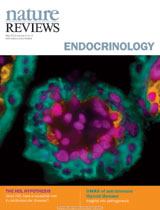Stroke:胆固醇水平与脑出血风险呈负相关
2013-06-07 Stroke 丁香园
各种胆固醇的水平与脑出血的风险相关并不一致,各种胆固醇的水平与脑出血之间的关系如何尚不清楚。为此,我国第二军医大附属长征医院神经外科的黄承光教授等人进行了一项研究,研究结果在线发表在2013年5月23日的Stroke杂志上。研究结果显示:总胆固醇水平与脑出血风险呈负相关,较高的低密度脂蛋白水平可能与较低的脑出血风险相关,高密度脂蛋白可能与脑出血风险呈正相关。 该研究是一项系统回顾及meta分析。
各种胆固醇的水平与脑出血的风险相关并不一致,各种胆固醇的水平与脑出血之间的关系如何尚不清楚。为此,我国第二军医大附属长征医院神经外科的黄承光教授等人进行了一项研究,研究结果在线发表在2013年5月23日的Stroke杂志上。研究结果显示:总胆固醇水平与脑出血风险呈负相关,较高的低密度脂蛋白水平可能与较低的脑出血风险相关,高密度脂蛋白可能与脑出血风险呈正相关。
该研究是一项系统回顾及meta分析。研究人员在PubMed和Embase上搜索相关的英文文献。只纳入符合以下标准的文献:前瞻性研究、对脑出血风险估计了95%可信区间、比较了≥3种胆固醇类型的水平、比较了较高与较低的胆固醇水平、计算了每mmol/l胆固醇水平增加的风险值。使用随机效应模式以整合研究特异性结果。
研究结果显示:共纳入23个前瞻性研究,总有1430141位志愿者参与,脑出血患者为7960位(5.6%)。在高水平与低水平的分析中,脑出血总的相对风险为:总胆固醇:0.69 (95% CI, 0.59–0.81), 高密度脂蛋白:0.98 (95% CI, 0.80–1.19) ,低密度脂蛋白:0.62 (95% CI, 0.41–0.92) 。在剂量反应分析中,脑出血的总体相对风险为,每增加1 mmol/L总胆固醇,出血风险增加0.85 (95% CI, 0.80–0.91),每增加1mmol/l高密度脂蛋白,出血风险增加1.11 (95% CI, 0.99–1.25), 每增加1mmol/l低密度脂蛋白,出血风险增加0.90 (95% CI, 0.77–1.05)。高密度脂蛋白的合并相对危险因素为1.17 (95% CI, 1.02–1.35) 。
该研究发现:总胆固醇水平与脑出血风险呈负相关,较高的低密度脂蛋白水平可能与较低的脑出血风险相关,高密度脂蛋白可能与脑出血风险呈正相关。

Cholesterol Levels and Risk of Hemorrhagic Stroke: A Systematic Review and Meta-Analysis.
BACKGROUND AND PURPOSE
Cholesterol levels are inconsistently associated with the risk of hemorrhagic stroke. The purpose of this study is to assess their relationships using a meta-analytic approach.
METHODS
We searched PubMed and Embase for pertinent articles published in English. Only prospective studies that reported effect estimates with 95% confidential intervals (CIs) of hemorrhagic stroke for ≥3 categories of cholesterol levels, for high and low comparison, or for per 1 mmol/L increment of cholesterol concentrations were included. We used the random-effects model to pool the study-specific results.
RESULTS
Twenty-three prospective studies were included, totaling 1 430 141 participants with 7960 (5.6%) hemorrhagic strokes. In high versus low analysis, the summary relative risk of hemorrhagic stroke was 0.69 (95% CI, 0.59-0.81) for total cholesterol, 0.98 (95% CI, 0.80-1.19) for high-density lipoprotein cholesterol, and 0.62 (95% CI, 0.41-0.92) for low-density lipoprotein cholesterol. In dose-response analysis, the summary relative risk of hemorrhagic stroke for 1 mmol/L increment of total cholesterol was 0.85 (95% CI, 0.80-0.91), for high-density lipoprotein cholesterol was 1.11 (95% CI, 0.99-1.25), and for low-density lipoprotein cholesterol was 0.90 (95% CI, 0.77-1.05). The pooled relative risk for intracerebral hemorrhage was 1.17 (95% CI, 1.02-1.35) for high-density lipoprotein cholesterol.
CONCLUSIONS
Total cholesterol level is inversely associated with risk of hemorrhagic stroke. Higher level of low-density lipoprotein cholesterol seems to be associated with lower risk of hemorrhagic stroke. High-density lipoprotein cholesterol level seems to be positively associated with risk of intracerebral hemorrhage.
本网站所有内容来源注明为“梅斯医学”或“MedSci原创”的文字、图片和音视频资料,版权均属于梅斯医学所有。非经授权,任何媒体、网站或个人不得转载,授权转载时须注明来源为“梅斯医学”。其它来源的文章系转载文章,或“梅斯号”自媒体发布的文章,仅系出于传递更多信息之目的,本站仅负责审核内容合规,其内容不代表本站立场,本站不负责内容的准确性和版权。如果存在侵权、或不希望被转载的媒体或个人可与我们联系,我们将立即进行删除处理。
在此留言










#负相关#
89